My plan for Solar Eclipse 2024 was flawless. I had the equipment I needed: a new Canon DSLR along with a first-rate solar filter, wired remote to eliminate camera shake, and a sturdy tripod. I had practiced taking photos of the sun weeks ahead of the event to make sure I had the right manual settings. In addition, by the morning of the event, I had three fully-charged batteries for my DJI Spark 2s drone, which I would launch and allow to hover while recording a video of the totality…light to dark and back again to light. It was going to be great.
Boy, was I wrong.

I launched my drone around noon on April 8th to take some photos of our neighborhood watch party and at some point, for some inexplicable reason, it lost contact with the controller and disappeared. I wasn’t even sure which direction it headed when that happened, but I guessed that it went south from our clubhouse where we had gathered. But I didn’t know if it was hovering when it went down, or if it was moving, so it could have gone anywhere with the fifteen minutes it had left on the battery. I later drove around in the golf cart but didn’t find it, and frankly, I despaired of ever finding it given the thick woods and brush — not to mention the creek — that surrounds our neighborhood.
But the next morning I had a facepalm moment when I realized that there was a Find My Drone feature in the DJI app. The drone starts a video as soon as it loses contact with the controller and continues (I think) until the battery dies or it crashes. It also generates a map (see below) and records the coordinates of the last known location.
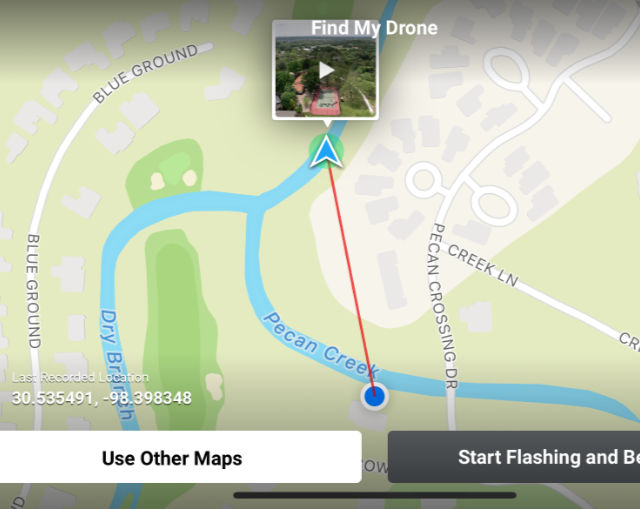
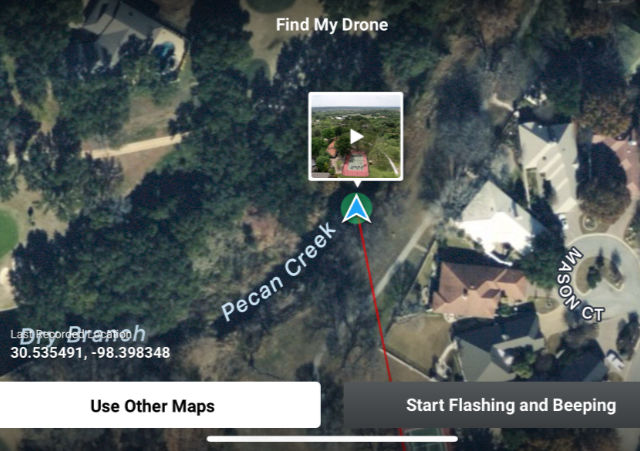
I was able to use that video to narrow down where it appeared to land (crash) — it was pretty much 180º from where I thought it went, but it was still in our neighborhood. There’s no easy way to download the 11-second video, but here are some selected screen grabs:

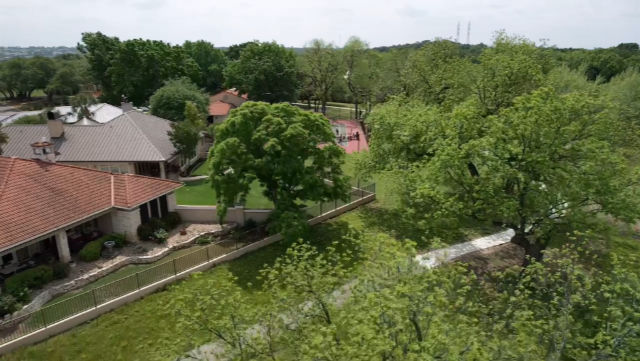
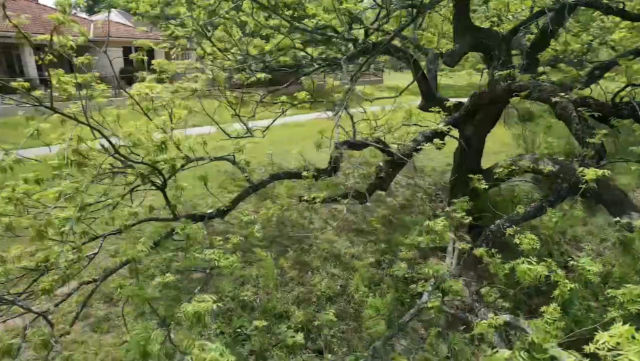
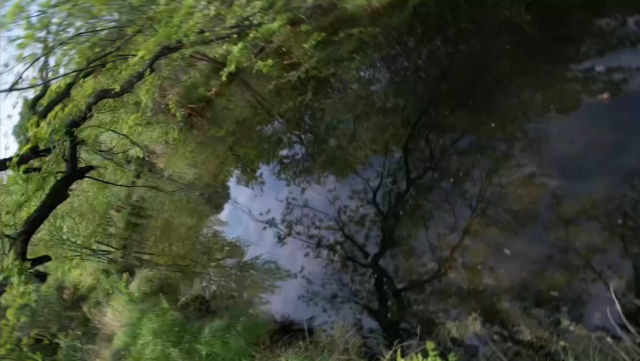
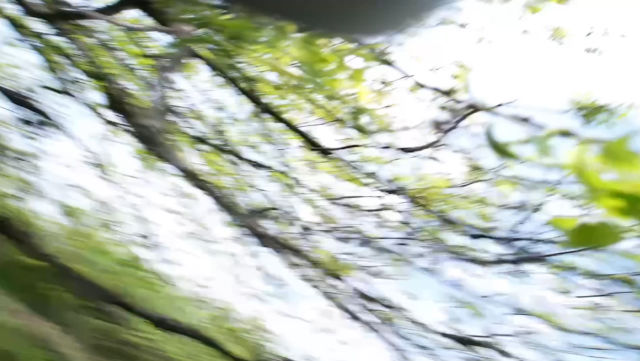
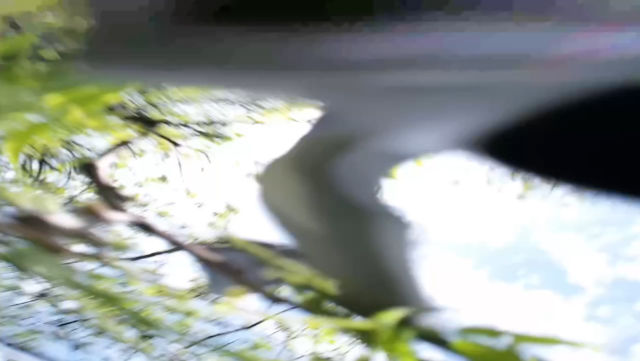
I took the golf cart around to where it looked like it crashed, and after 20 minutes of fighting through hip high vegetation along the creek bed, I found it:
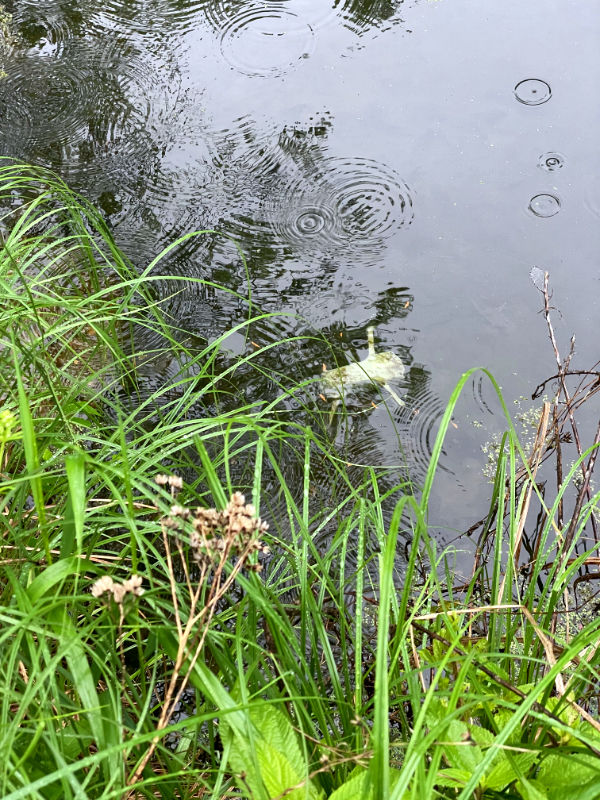
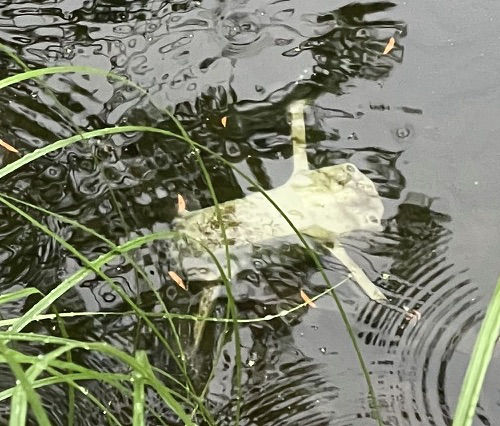
That’s right: it was upside down in the creek in 2′ of water. I was able to fish it out with a rake and it appeared to be in good shape other than, well, you know.
Back at the house, I dried it off and used a heat gun on a low setting get as much of the excess water out as possible, and then sealed it in a freezer bag filled with rice. (It wasn’t until the next day that I thought to order an actual dessicant pack from Amazon; I’ll replace the rice with it when it arrives tomorrow.)
I’m not optimistic about being able to resurrect it after 20 hours submerged in water, but it’s worth a try. I’ll let you know how it turns out.
At least it’s not still out there in the wilderness, scared and lonely. 🤣

So, what went wrong? I don’t have a definitive answer, but in doing some research I discovered that the potential for such a problem was known beforehand. This report sums it up nicely in an article providing tips for piloting a drone during the eclipse:
Monitor your GPS signal
Local drone enthusiasts should take note that GPS signal reception could experience disruptions during the upcoming solar eclipse. These disruptions may result in navigation challenges or even loss of control over your drone. To ensure your flight operations’ safety, it is advised to monitor your drone’s GPS signal closely.
— Source: www.livenowfox.com
I also ran across at least two other reports on social media from drone operators whose aircraft inexplicably escaped the surly bonds of their controllers and disappeared from sight during the eclipse.
I’m unsure as to why the eclipse would disrupt GPS signals, although this article offers an exquisite, albeit highly technical explanation: the eclipse also messes with the upper atmosphere, where many radio waves travel. So, the messing around of the eclipse majorly messed up my thousand dollar drone. Good to know.
Here’s a better explanation:
According to NASA, a solar eclipse impacts Earth’s upper atmosphere, the ionosphere, due to the sudden reduction of solar radiation reaching the Earth’s atmosphere. Since the ionosphere contains charged particles (ions and electrons) and is responsible for reflecting and refracting radio waves, changes to the ionosphere can also affect radio communications and navigation systems.
— Source
And an even better technical description of the disruptive capabilities of a solar eclipse is here — too technical, in fact, for me to copy but feel free to educate yourself.
So, had I bothered to be paranoid (or enlightened) enough to investigate in advance, I perhaps could have avoided this fiasco. Then again, I’ve never been credited with an overabundance of wisdom so I probably would still have done the same thing. After all…I had a plan.

Had this been the only part of my plan that went off the tracks, it still would have been disastrous. But to add insult to injury, just before totality occurred, the lock on my tripod mount failed and my camera slipped just enough to lose its focus on the sun. By the time I was able to get things rearranged properly, the moment had passed. I did get some nice pictures leading up to totality, but still missed the main event. Eh…that’s OK. I’ll be better prepared for the next one. After all, it’s only *checks calendar* 319 years from now.
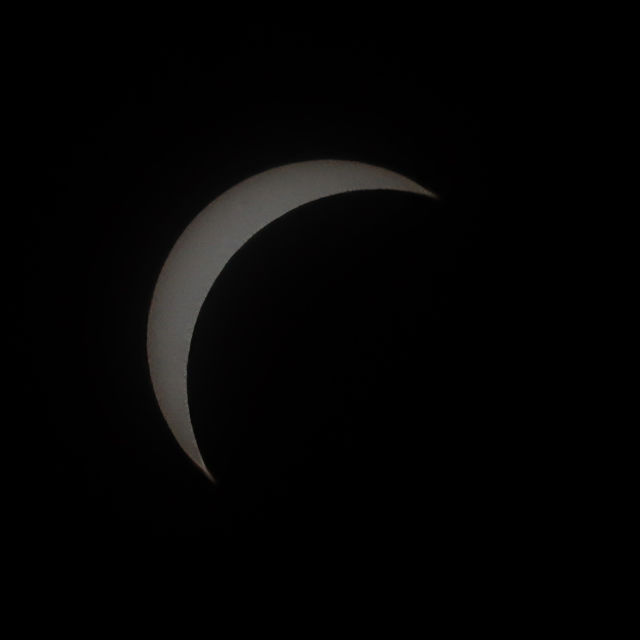
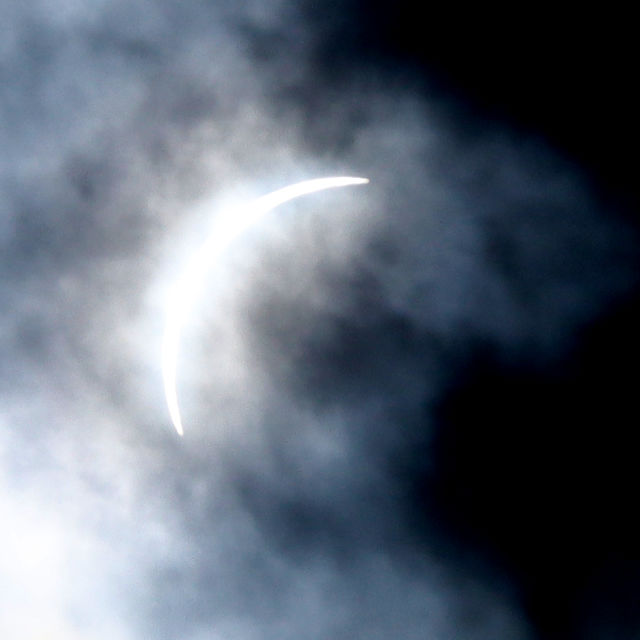

Discover more from The Fire Ant Gazette
Subscribe to get the latest posts sent to your email.


1 comment
Comments are closed.